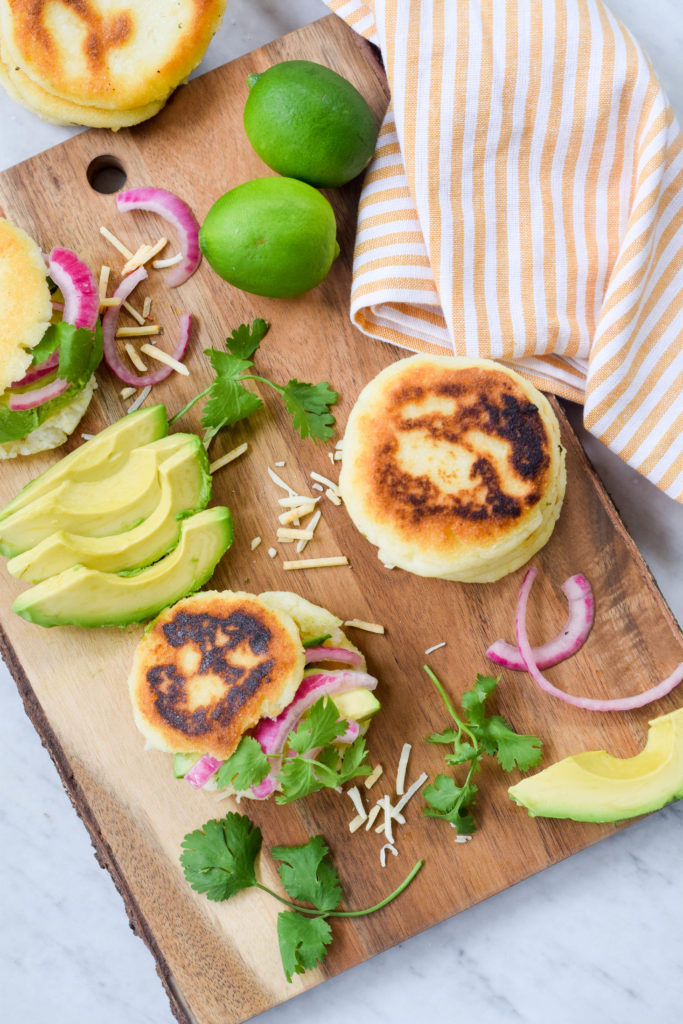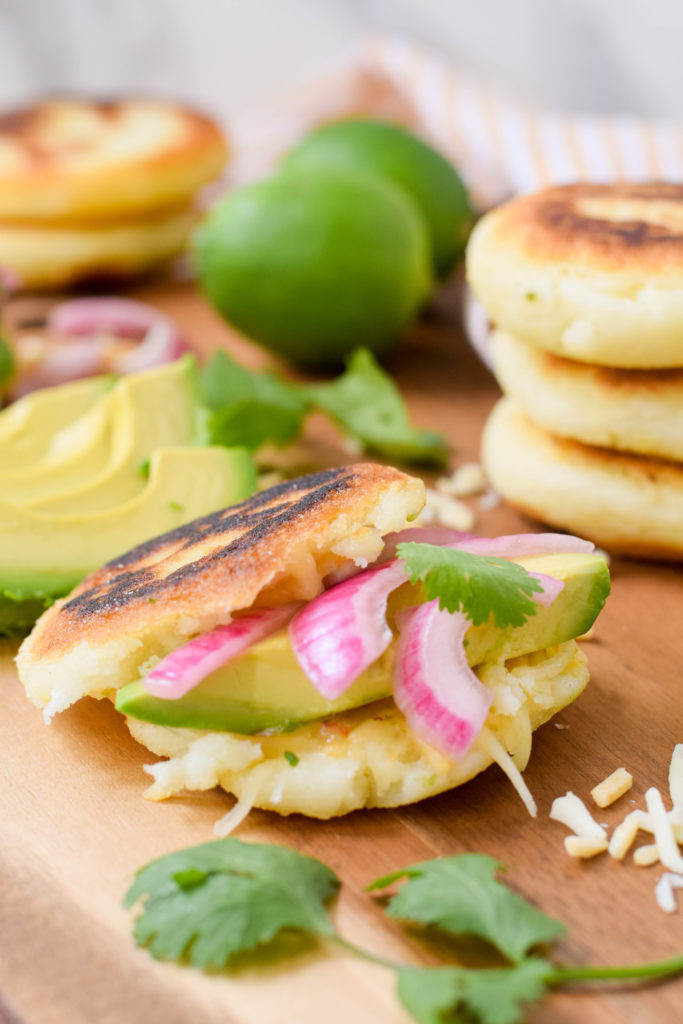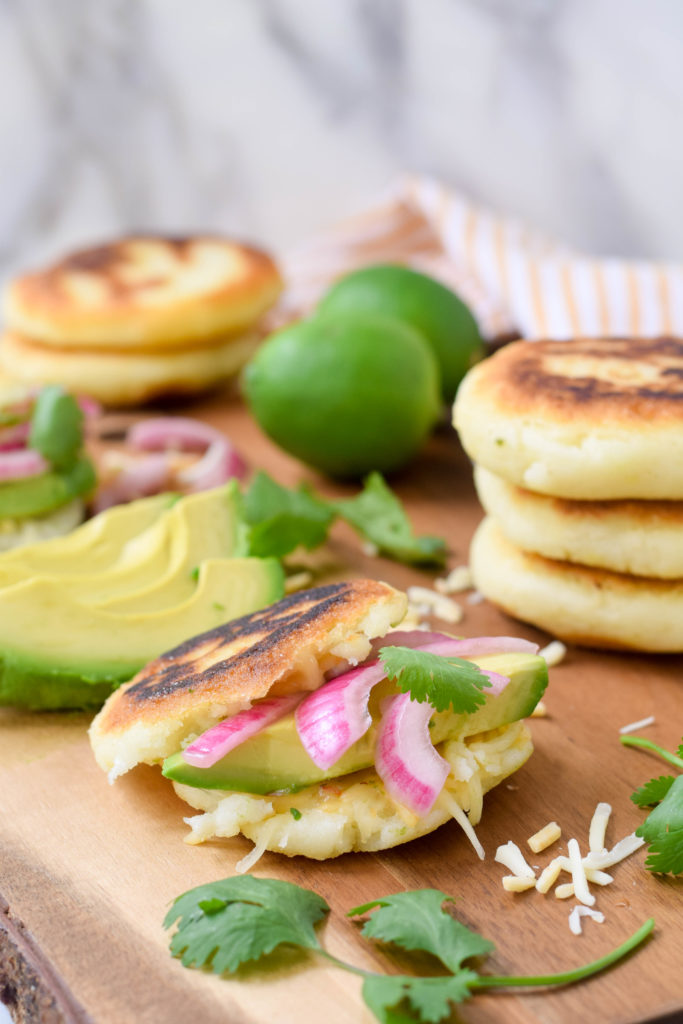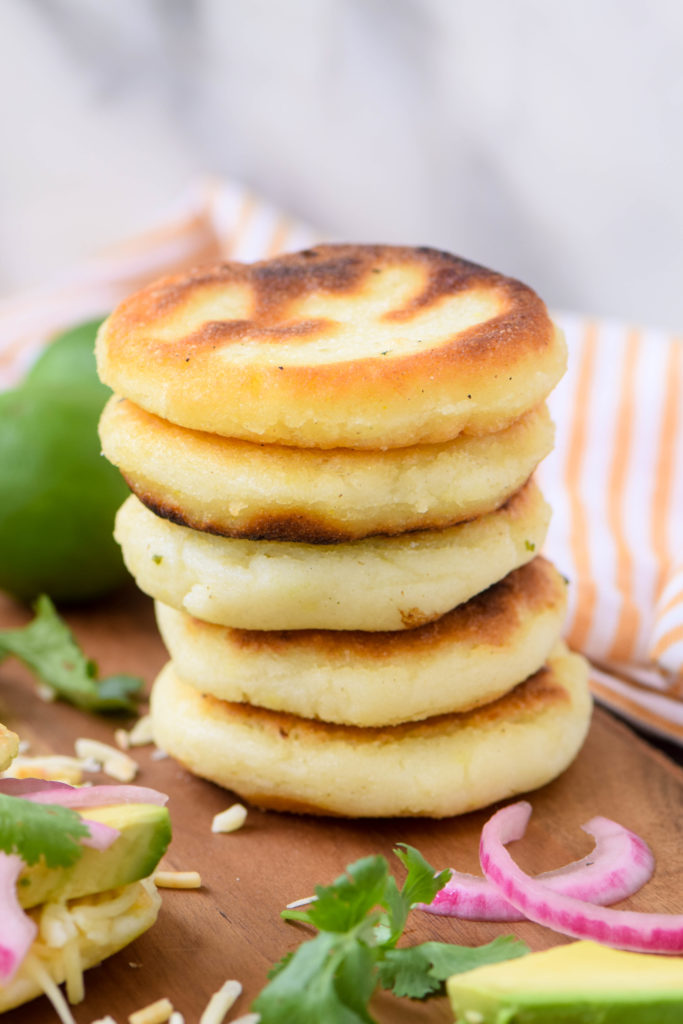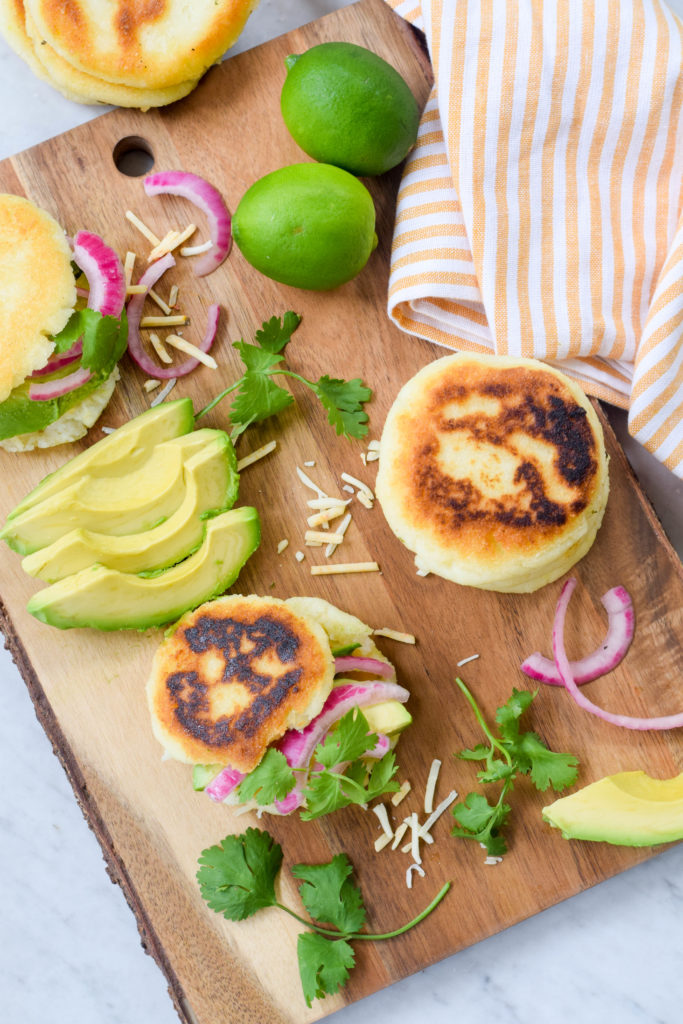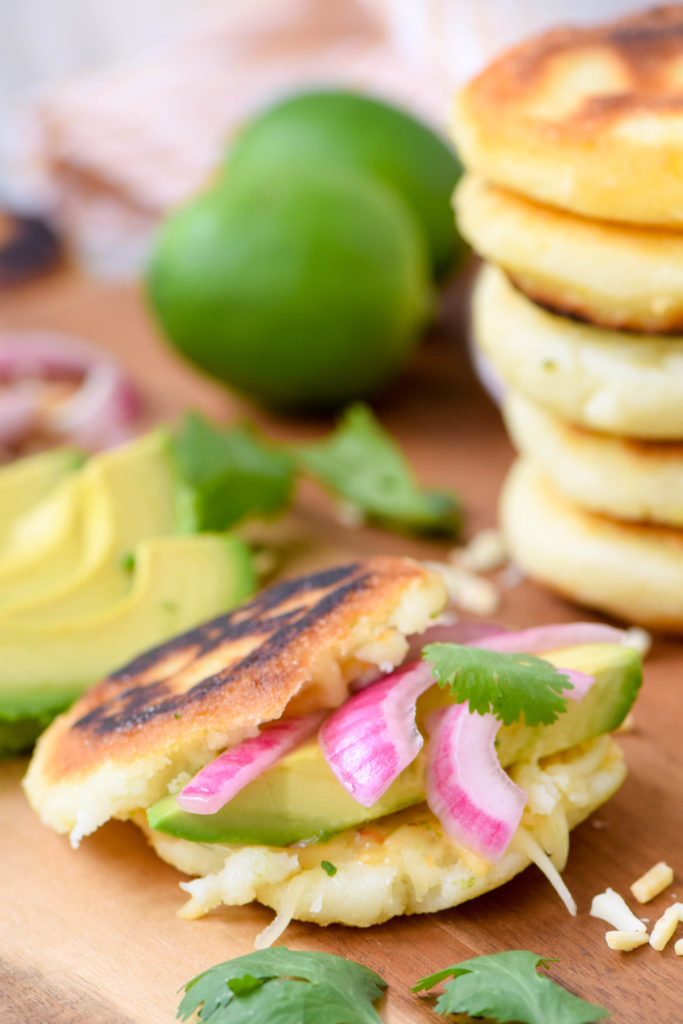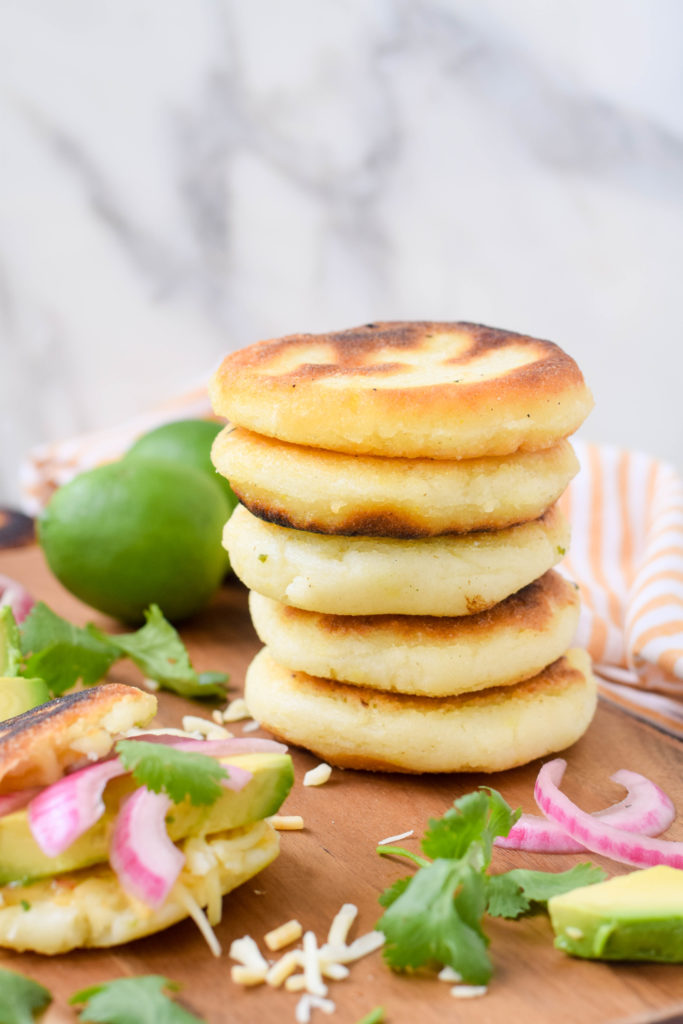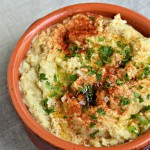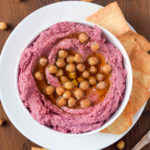Try your hand at arepas — easy-to-make savory Venezuelan corn cakes — and you will want to serve them with everything!
A few years ago, when I was in New York on the book tour for Food Swap, I met a lovely young woman named Mercedes, who was orginally from Venezuela. As we chatted, I asked Mercedes about arepas, a savory corn cake that I knew to be a Venezuelan specialty. I think Mercedes was pleased that I knew about arepas because while they are starting to catch on, arepas have not achieved the kind of mainstream fame in the U.S. that, say, empanadas have.
The reason that I knew about arepas, however, was not because I am a well-read South American food expert. Rather, it was pure luck. In 2010, a casual, counter-service Venezuelan restaurant opened in downtown Oak Park that served a few appetizers, some fresh-squeezed juices and arepas with nineteen different meat, vegetable and cheesy fillings.
I loved Aripo’s, as it was called, although I never quite figured out how to order there – one arepa wasn’t enough for lunch, but two was too much. I don’t know why Oak Park was fortunate enough to get one of the few Venezuelan restaurants in the Midwest, but I do know that we didn’t deserve it. Sadly, Aripo’s closed in 2015.
So when I met Mercedes in 2016, I was in serious need of an arepa fix. Luckily, Mercedes emailed me after the event with her family recipe and lots of information on how to make authentic Venezuelan arepas at home. As instructed, I bought a bag of the pre-cooked corn flour that is absolutely essential for making arepas, Harina PAN. (Easy to find online or in the Latin aisle of a good grocery store.)
Ever since that time, when the mood strikes, I pull out the bag of flour and make a batch of arepas according to Mercedes’s recipe. I find the crispy outside and dense, slight gummy interior of an arepa to be absolutely irresistible.
Sometimes I serve the arepas plain, which in Venezuela is called La Viuda, or “the widow.” We just slice the arepas in half and butter them like bread. Simple and utterly carb-tastic. This is apparently how arepas are often eaten in neighboring Colombia.
But it is much more typical in Venezuela to split arepas open at the top and stuff them so they become messy, one-handed sandwiches. Stuffed this way, arepas make a satisfying meal. (See above: One is not enough, but two is too many.)
According to Mercedes, typical arepa stuffings include cheese; ham and cheese; perico, which is scrambled eggs with a tomato and onion sofrito; domino, which is black beans and queso fresco; and reina pepiada (dotted queen), which is chicken salad and avocado. But arepas are quite forgiving – you can stuff them with whatever odds and ends you have in your fridge and your leftovers will suddenly become much, much more interesting.
This recipe has you cook the arepas in a skillet, but Mercedes told me that you can also form the dough into tamale-like shapes and boil them for 5-8 minutes. Apparently, these are not really arepas but “bollitos” when made this way. Mercedes also does something a little unorthdox: she presses arepa dough in a waffle iron. You can’t really split them open if you cook them this way, but you will have perfect little gluten-free toasts. Score!
Interestingly, three years after the demise of Aripo’s, there seems to be a new wave of Venzuelan restaurants in Chicago servng arepas. In fact, the Chicago Tribune ran an article last week stating that arepas are “having a moment.” I am glad that Chicagoans once again can order arepas at will, but I, for one, am glad I learned how easy it is to make these versatile, savory corn cakes at home.
When I met Mercedes two years ago, the politcial situation in Venezuela was already very bad. Since that time, the humanitarian crisis in Venezuela has worsened and I regularly hear news about shortages of food and medicine, rampant inflation and now a sham election that has handed President Nicholás Maduro another six-year term. I can only imagine how anxious and distressed Venezuelan ex-pats here in the U.S., like Mercedes, must be about what is happening in their country and their friends and family back home.
It feels strange to blithely make arepas in my kitchen while Venezuela falls deeper into chaos and authoritarian rule. But, in a way, it makes a distant crisis feel more real to me, knowing that I met and connected with a lovely Venezuelan woman and that she shared a family recipe with me. I hope that one day, the polticial and economic situation in Venezuela will improve and I can sample Venezuelan’s national dish in its place of origin.
Ingredients
- 1 1/4 cup of warm water
- 2 TB grape seed or olive oil, divided
- 1 tsp kosher salt
- 1 cup of Harina PAN (pre-cooked corn meal)
Instructions
- Mix the warm water with the oil and salt in a large bowl.
- Gradually whisk in the cup of PAN.
- Rest the dough for 5-10 minutes to allow the corn meal to absorb the liquid. The dough should hold together when squeezed and not stick to your hands.
- Divide the dough into 4 portions and roll into balls with your hands
- Flatten the balls until they are 1/2 inch thick.
- To cook, heat remaining tablespoon of oil in a large nonstick skillet over medium heat.
- Add arepas, cover, and cook until golden brown, 6–8 minutes.
- Flip areaps and cook until other side is golden brown, 6–8 minutes. Transfer arepas to a paper towel to drain.
- Cut in half lengthwise and stuff as desired.
Notes
Feel free to double the recipe to serve a larger crowd.
SaveSave
